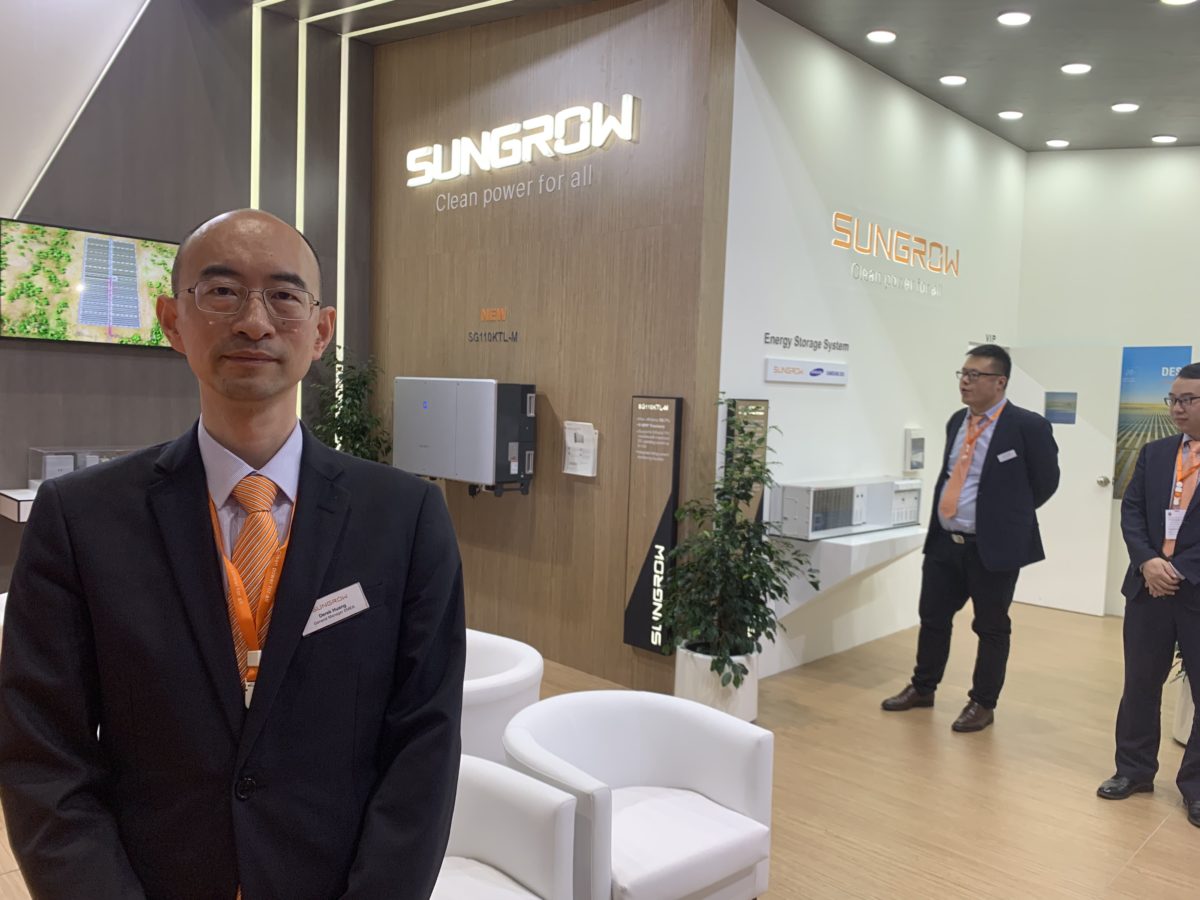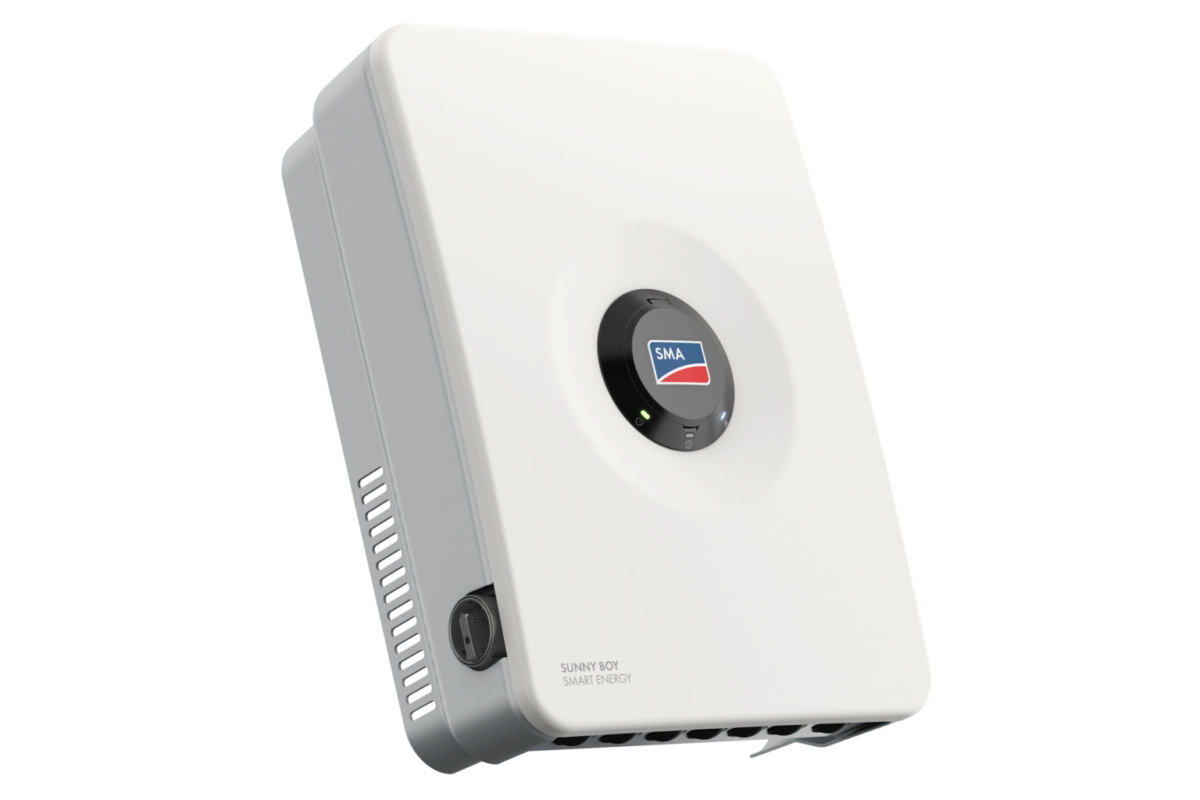Sungrow opened its MENA office in October, its 20th international base. What was behind the decision? How long had Sungrow been contemplating a move into the region?
We have been thinking about this quite actively for the past three or four years. The most important thing is that we see the real potential, but we also want to see real action in the MENA region. Until recently, we saw that there are a lot of projects popping up and a lot of projects going on, and we think this is the right timing for us to set up the office there.
In early 2018 we started the process of setting up for the subsidies. After careful selection, we chose Dubai for our office location, and by October we finished everything which is critical, and now we are hiring people.
How many people do you intend to hire?
We would like to hire step by step. At the moment, this year, we will hire three to four new people.
And what kind of roles will they carry out?
It will be for running [a] subsidy operation, sales and marketing. They will do technical consulting, technical offers.
In the announcement of the new office, Sungrow pointed at the 1,500 V solution? Why do you think this will be a good product for the region?
I believe that first of all the MENA region, the GCC [Gulf Cooperation Council] countries, have a lot potential for the solar industry, that is for sure. Their actions are a little bit slow compared to European players and countries. They don’t have specific regulations like [the European Commission’s] Horizon 2020 to meet new energy requirements. But I believe that most of the GCC countries realize that to cultivate solar is better than to use oil. Countries like Jordan, which are lacking natural resources, are pioneers in this industry, and all the other countries see the success of Jordan’s new energy sector.
So these are the merits and benefits of the technology. The good part of the GCC countries is that they have a lot of land. If you have a lot of land then 1,500 V is automatically a good solution. Even for the industrial sector, they have big rooftops and a lot of facilities which need also solar and storage. So we see that 1,500 V is the mainstream. Comparing with [the] MENA region, if you see the Spanish market, 99% is 1,500 V.
Because of the cost advantage?
Not really. It goes with higher efficiency and more yield for the customers.
You mentioned storage, and we have heard quite a lot of discussion among the policymakers. Now they are thinking about integrating PV. How will solar be integrated into the grid, and how will it match demand? Sungrow has a long engagement in the storage space through the Samsung SDI partnership. Do you see storage playing a role here?
Of course!
But what kind of role? Will it be commercial and industrial?
It will be utility and C&I market [segments]. Because at this [World Future Energy Summit] exhibition we met a lot of customers who were interested in storage systems. Because there are some pilot projects going on; for example in Jordan, Saudi Arabia, definitely [in the] UAE. So we see the potential for storage, because in this region you have more than enough solar, so it has to be stored somewhere. Actually, the only bottleneck for storage is the price, not only in terms of the solar, but also for wind and hybrid – but also the industry is booming for electric cars.
For the good [quality] brand battery system provider, the demand is still more than they can supply. So price is still at a high level. Unless price comes to a certain level, we still have to do it step by step. First start with pilot projects. Luckily, we have been in this industry – solar-plus-storage – for more than three years. We have [had] joint ventures over the past three years and we continued our cooperation with Samsung SDI. So I think we have gained enough experience in the storage area.
On technology in this region, there are high temperatures, very high temperatures. To avoid de-rating, cooling strategies are needed. But also, there is a lot of dust. So a kind of dual challenge. We covered this topic in the January 2019 issue of pv magazine global. What kind of strategy does Sungrow adopt to deal with heat and dust?
In terms of high temperatures, we have more than enough experience to prove that we can survive in high temperatures. For example in India, [in] the first project in Saudi Arabi or at Benban in Egypt, for 142 MW. So we have the cooling system. This applied to [both] the central and string inverters. This is a very practical solution. Even our competitors who used to have natural cooling systems, now their new machines will have active cooling.
So it is an active cooling system?
The argument is done! It shows that Sungrow has more than enough experience in this sector – similar to SMA. In the future – you mentioned the dust – I think that the ventilation system and everything also needs to be considered. In the future our product, no matter whether it is a central or string inverter, will meet the standard IP65. So we believe that will help us to solve the problems of dust or the system’s O&M and operational issues.
And if there are ventilation fans, then for operations and maintenance do you incorporate sensors in these kinds of things?
It is very easy, actually. If you look at our inverter, for example the string inverter ventilation, the fan is easy – in five minutes you can dismantle and fix it. Even our sales [team] can do it! So that is an easy job, and of course the fan is not always operating. The fan will only work when the inside temperature or the outside temperature reaches a certain level. So the lifespan can be guaranteed.
For the central solution, I think that a ventilation system is a must. And also we have a system that is very easy to maintain and to exchange. It is not rocket science. That will help us a lot in the future to guarantee a 20-year lifespan O&M, or warranty or service.
You mention string inverters. The distributed generation market has been a little bit slower in this part of the world. What do you expect from the rooftop market segment?
I believe that the rooftop market, especially in the MENA region, will come very, very quickly. Because this market is a subsidy free market. And it will help a lot of industry players to save their cost on electricity bills. And I think that the only obstacle at the moment is that different countries don’t have a scheme to support [the DG segment]. Some countries, like in the European Union, may even impose taxes on [self-consumption]. If they have the right scheme, the project will come out very easily.
We have implemented more than 40 MW in the area of rooftop projects, for the Shams projects [in Dubai] for example. We are quite optimistic regarding the rooftop segment. Of course, in terms of volume, [DG] cannot compete with utility size in the MENA region, because in the MENA region the potential is too big. But it will be a very healthy sector, in the future.
Well the Chinese market developed that way, first large-scale and then slowly moving towards residential.
Yes, correct. But we have to develop it step by step. In the future, I believe that every household of the MENA region will have a residential [PV] product. Because their housing is suitable for solar.
Still on string inverters, there has been a trend with multiple suppliers introducing high powered string products. Even 1,500 V architectures. What is Sungrow’s strategy?
Of course, the bigger, the better. I think we are the leading player in terms of capacity for the string inverters. If you look back four years ago, we were the first ones to launch a 60 kW [product] and then we launched again a 125 kW. It is also the first in [the] world [at this capacity]. I think at this year’s Intersolar you will see the next generation of our high power capacity string inverters.
But of course, you will supply central inverters when you have a nice flat piece of land.
Yes, because we don’t argue with our customers about which is the best technology. We always believe that the customer has the best knowledge to make decisions on which solution they can choose. That is because every project varies in size and angle and everything. We believe that customers have the expertise to choose whichever technologies they can use, because we can offer both technologies with cutting-edge products. Of course, when customers are asking us to give some advice, we also can do that. But in general, we believe that customers will make the best choice. And our responsibility is to provide the best preferred solutions to them, with the best quality and service.
So overall, what’s your expectation for the MENA region?
I would like to add that I see in the MENA region that the projects are coming. Solar will be booming and it is a very good sign, because we want to develop further in this emerging market. We believe that Sungrow can be a very strong partner for our potential partners in the MENA region. We hope that we can be here for a long, long time.
This content is protected by copyright and may not be reused. If you want to cooperate with us and would like to reuse some of our content, please contact: editors@pv-magazine.com.




1 comment
By submitting this form you agree to pv magazine using your data for the purposes of publishing your comment.
Your personal data will only be disclosed or otherwise transmitted to third parties for the purposes of spam filtering or if this is necessary for technical maintenance of the website. Any other transfer to third parties will not take place unless this is justified on the basis of applicable data protection regulations or if pv magazine is legally obliged to do so.
You may revoke this consent at any time with effect for the future, in which case your personal data will be deleted immediately. Otherwise, your data will be deleted if pv magazine has processed your request or the purpose of data storage is fulfilled.
Further information on data privacy can be found in our Data Protection Policy.